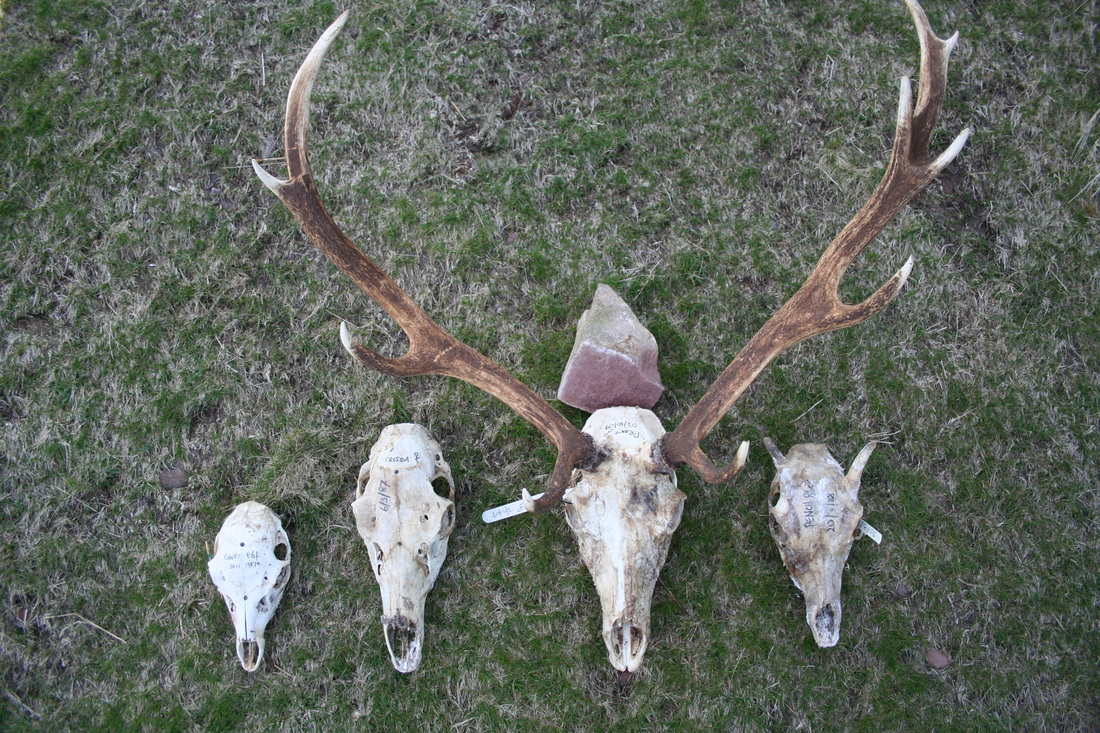
Corina Logan's study of red deer shows females with larger brains live longer
We found that some of the cross-species predictions about brain size held for female red deer, and that none of the predictions were supported in male red deer. This indicates that each sex likely experiences its own set of trade-offs with regard to brain size.
Corina Logan
The size of a female animals' brain may determine whether they live longer and have more healthy offspring, according to new research.
The study*, Endocranial volume is heritable and is associated with longevity and fitness in a wild mammal, published in the Royal Society Open Science journal, shows that female red deer with larger brains live longer and have more surviving offspring than those with smaller brains. Brain size is heritable and is passed down through the generations. It is the first extensive study of individual differences in brain size in wild mammals and draws on data comparing seven generations of deer.
Across species of mammals, brain size varies widely. This is thought to be a consequence of specific differences in the benefits and costs of a larger brain. Mammals with larger brains may, for example, have greater cognitive abilities which enable them to adapt better to environmental changes or they may have longer lifespans. But there may also be disadvantages, for instance, larger brains require more energy so that individuals that possess them may show reduced fertility.
The researchers, based at the University of Cambridge's Zoology Department and Edinburgh University's Institute of Evolutionary Biology, wanted to test if they could find more direct genetic or non-genetic evidence of the costs and benefits of large brain size by comparing the longevity and survival of individuals of the same species with different sized brains. Using the skulls of 1,314 wild red deer whose life histories and breeding success had been monitored in the course of a long-term study on the Isle of Rum, they found that females with larger endocranial volumes lived longer and produced more surviving offspring in the course of their lives.
Lead author Corina Logan, a Gates Cambridge Scholar and Leverhulme Early Career Research Fellow in Cambridge's Department of Zoology, says: "The reasons for the association between brain size and longevity are not known, but other studies have suggested that larger brains are a consequence of the longer-lived species having longer developmental periods in which the brain can grow. These hypotheses were generated from cross-species correlations; however, testing such hypotheses requires investigations at the within-species level, which is what we did."
Corina adds: "We found that some of the cross-species predictions about brain size held for female red deer, and that none of the predictions were supported in male red deer. This indicates that each sex likely experiences its own set of trade-offs with regard to brain size.” The study also showed that females' relative endocranial volume is smaller than that of males, despite evidence of selection for larger brains in females."
Corina said: "We think this is likely due to sex differences in the costs and benefits related to larger brains. We don’t know what kinds of trade-offs each sex might encounter, but we assume there must be variables that constrain brain size that are sex specific, which is why we see selection in females, but not males."
Tim Clutton-Brock, who set up the Rum Red Deer study with Fiona Guinness in 1972 and initiated the work on brain size, points out that the reason that this kind of study has not been conducted before is that it requires long term records of a large number of individuals across multiple generations and data of this kind are still rare in wild animals.
*The study, Endocranial volume is heritable and is associated with longevity and fitness in a wild mammal, is co-authored by C.J. Logan, R. Stanley, A.M. Thompson, T.H. Clutton-Brock from the Department of Zoology at the University of Cambridge and L.E.B. Kruuk from the Institute of Evolutionary Biology, University of Edinburgh.It is published in Royal Society Open Science 3:160622. Picture credit: Alex Thompson.












